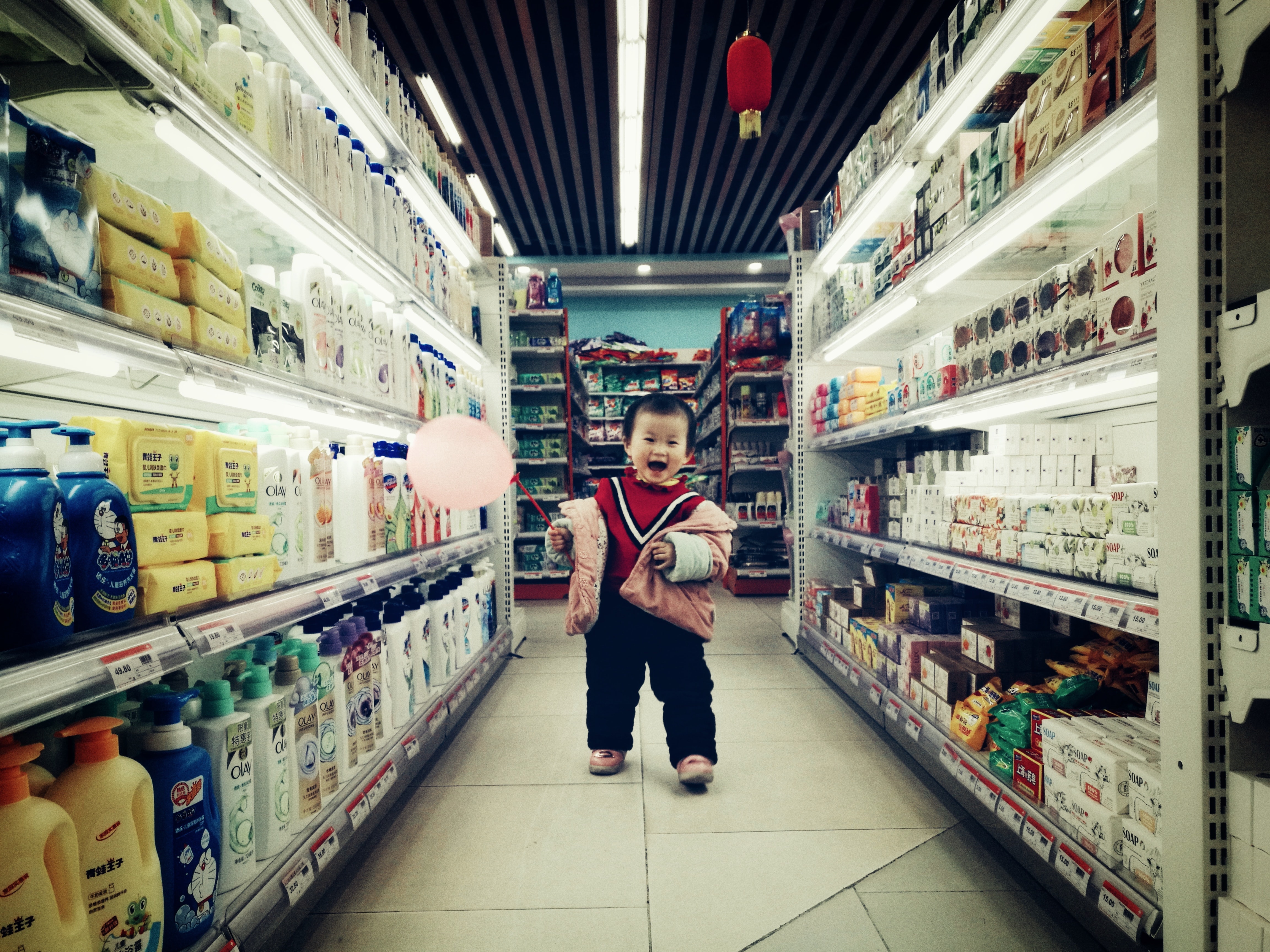While creating a safe environment for your little ones to express their emotions, do also set some healthy boundaries and limits in order to manage them.
As your little ones grow and assert their increasing independence, they will also need your help and guidance in managing their emotions. We recommend the following healthy behaviour management strategies, coupled with tips on how to help them handle their feelings.
Development and Behaviour

Toddlers
Toddlers are beginning to experience new feelings, such as pride, guilt, embarrassment and shame, and will require lots of help in managing their emotions. These may vary quickly from moment to moment. For instance, if you don’t understand what they’re saying, if they say the wrong word, i.e., no instead of yes, or throwing a toy out of anger. All these are indications that your toddlers are struggling with their emotions.
At this age, tantrums typically become more common, as toddlers attempt to assert their independence but are still unable to effectively communicate their needs. Additional stressors like being tired, hungry or sick can intensify these tantrums. Aside from crying, screaming, yelling and whining, toddlers may also kick, hit, pinch or bite, hold their breath or tense and thrash their bodies.
Preschoolers
To manage a preschooler, you’d need a lot of versatility. In fact, you may have to change your strategies from week to week. As your child grows, he/she seeks to become more independent, and may test out new behaviours to see your response. Additionally, they may get frustrated because they are unable to accomplish certain tasks as their motor skills are not refined enough yet. Hence, they might defy you, back talk or procrastinate.
While they have a basic understanding of right and wrong, and can follow simple rules, they may struggle to make correct choices especially if they do not understand the adult logic behind a decision. Additionally, they will need a lot of work with impulse control, thus they may yell or say mean things. At this age, common challenges include lying, whining, reverting to baby talk or asserting their independence.
Healthy Behaviour Management Strategies
Be Consistent

Help your little ones cope with this world that may be very overwhelming to them. Hence, one way to help them is to keep to the same schedule daily, with consistent naps, meals, bed and playtimes. Should there be any changes, do let your child know in advance, so he/she is prepared. Constant repetition for discipline, e.g., “no hitting” is also important.
Similarly, preschoolers also struggle to manage their behaviours, especially when they’re overwhelmed, hungry or overtired. Hence, bring snacks, allow your child time to rest, and plan outings when your child is at their best. Additionally, set clear rules and limits, including when they’re going into a new situation, and educate them with consequences for breaking these rules.
Dealing With Tantrums

Some ways to respond to a tantrum include staying calm, ignoring it or trying other distractions. You can also remove your child from the situation, and acknowledge your child’s frustration and good behaviour.
First, try not to react to your child’s tantrum, especially with threats and anger. You may need to leave the room, provided your child is in a safe place. Hence, your child learns that tantrums are ineffective for getting your attention. When the tantrum has subsided, talk to your child about his/her behaviour. Exceptions to this is if your child is being violent, kicking, hitting others, throwing objects or screaming for extended periods of time. In such cases, remove your child from this and dangerous objects. Educate them by telling him/her that these behaviours are unacceptable.
Help Them Manage Their Emotions
Children follow their parents’ ways of managing their emotions. Hence, if you take a parent time-out to calm yourself down – as you’ll probably need to do when tempers run high, your little one will model his/her behaviour after you. When noticing your child starting to be unable to regulate themselves, reconnect with them so the happy, fun connection will help to eliminate the “misbehavior”. Accept your child’s feelings, so he/she knows you understand, which makes him/her more likely to cooperate.
While punishments or consequences are necessary for misbehaviour, they do not address how children can handle their emotions. Thus, they may try to repress these feelings instead. Hence, try to help your child safely feel his/her emotions, while limiting his/her actions. Stay compassionate and let your child express his/her fears and emotions. For older children, you can try anger management skills like taking deep breaths or practicing meditation.
Communicate With Them

When discussing unacceptable behaviours, get to the point and keep it simple and specific. Some healthy communication practices may include taking your child to a special place to talk about important things, or discuss conflicts after a cool-off period. In terms of decision making, let your child choose from two options. Next, help your child find different ways to address their feelings, such as alternatives to violence. Finally, when giving instructions, do so with eye contact and ask your child to repeat the directions to ensure they understand.
Know Their Triggers

Of course, you need to know their triggers. Common ones include rapid changes of venue, hunger and sleepiness, so if possible, try to ensure that your child is at home during these times. When going out, try to keep the outings short. Hence, instead of going for popular restaurants with long queues, try another option, or do your grocery shopping online or when the lines are short. Definitely always plan ahead so you don’t have to rush both yourself and your child while getting ready. Additionally, do involve your child in the process by setting a timer, or giving him/her a choice of which outfit to wear to school. Also, think out loud and let your child know about upcoming events on his/her schedule.
Do acknowledge their feelings of frustration and anger, which may help ease tantrums. Give simple reasons why an action should or should not be done. For example, if they’re resisting getting into their car seat, explain that it’s for their safety. At the same time, keep them away from items you don’t want them to touch, e.g., expensive jewellery, knives, scissors should be in locked drawers, to set boundaries for them.
Another strategy is to use distractions, such as another activity or object to stop the tantrum or negative behaviour. For example, if your child continues to throw an object after you’ve told him/her to stop, start him/her on a different activity like reading a book.
Place Your Child in Time Out

If your toddler is home and refuses to calm down, try a time out in another room, without anything to distract them. To do this, introduce this space to your little one during a calm moment, and explain what behaviours will trigger such a consequence. For example, hitting someone or being violent, or yelling angrily should be considered as major rule violations. Your child should get a minute of time out according to his/her age, e.g., two minutes for a two-year-old.
If outside, try to ignore the tantrum, unless your child is going to hurt themselves or others – in this instance it’s best to take your child and leave. Otherwise, you could take him/her aside to a quiet corner of the shopping mall, outside the car in a parking lot, or a bench at a park. For younger preschoolers, put them in a different room without distractions, while older children could do their time-out in a corner of a room. You may have to restart this time out several times as they may try to escape from their seat, or angle themselves to be able to face the television. Another strategy might be to take away privileges, such as a toy, game, watching TV or iPad, for the rest of the day.
Focus On Good Behaviour
Toddlers
Rather than just zeroing in on all the negative aspects of your toddler’s behaviour, do praise him/her when he/she has done something good as well. Whether you let your toddler “eavesdrop” on you telling your spouse what he/she has done, or praise him/her directly. When praising toddlers and preschoolers, focus on the process rather than the actual outcome. Hence, you don’t focus on the mess they might have made while bringing you a cup of juice, but rather the effort behind it. It’s also essential for your little ones to try to accomplish tasks on their own – whether they’re successful or not.
Do get down to their level, face to face and look them in the eye when praising them. This helps to increase their confidence. Using his/her name may also help him/her remember and understand more words. Be specific when praising them by pointing out the little things that they do, and help boost their confidence when they’re facing difficulties.
Preschoolers
Of course, praise also works for preschoolers, but make sure your praise is genuine. Similarly, praise their efforts – and their results, since they can better accomplish tasks now. For example, compliment them on helping you tidy up, and be specific about one or two things they did well. In cases where they haven’t quite mastered the skill, praise the effort to motivate and show them you believe in them.
Additionally, if you want to praise your children on their appearance, steer away from the usual “you look so handsome or pretty”, and instead comment on their clothes, or their hair. Use this as a way to begin a conversation to learn more about how they think or feel. Likewise, if your child shows you a drawing, pick out parts of the picture and ask about their choices. This lets your child know you’re really appreciating and looking at their work. Such praise can be adapted for a variety of situations, including their grades, eating, and helping others.
Other Ways to Manage Your Children's Behaviour
It’s fine to let your toddler win sometimes, over less important matters like wanting to read the same book over and over, or his/her choice of outfits when going out. You might find it easier to divert your toddler into choosing a different book or outfit once you’ve let him/her have his/her way. Another way to do this is to create a reward system where they get a treat for earning a certain number of stickers.
Relevant Reads: Sanity-Saving Tips For Parenting Toddlers, Help Your Child Learn Kindness
This article originally appeared on Motherswork.















